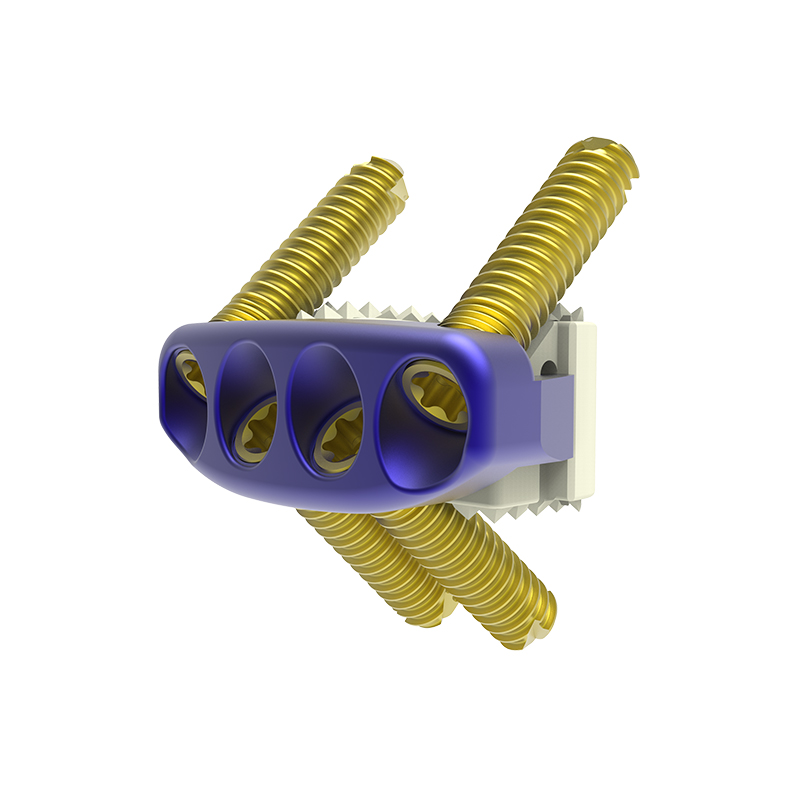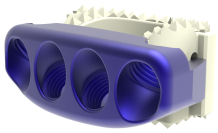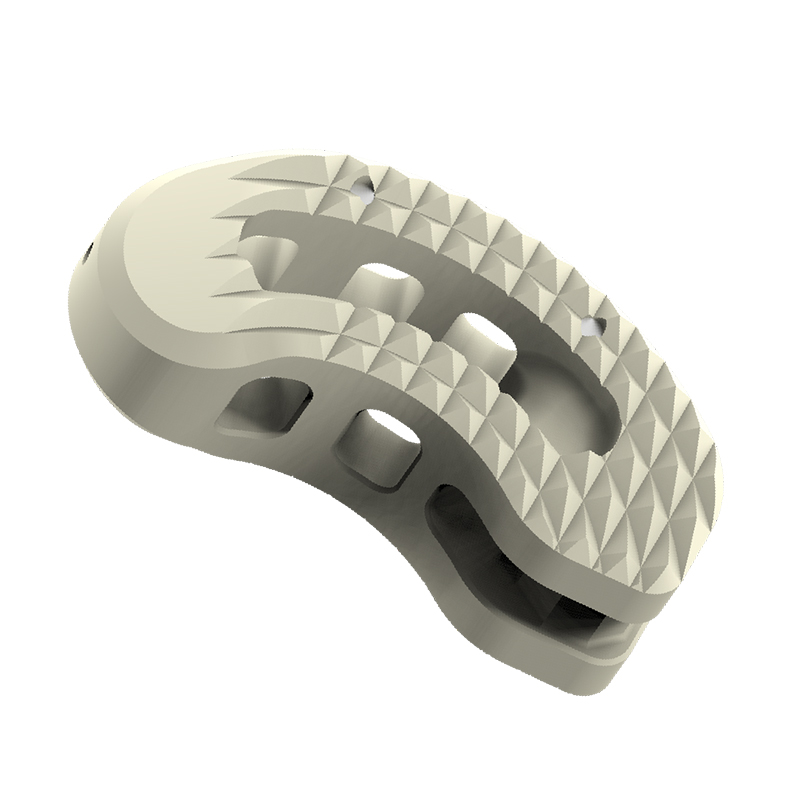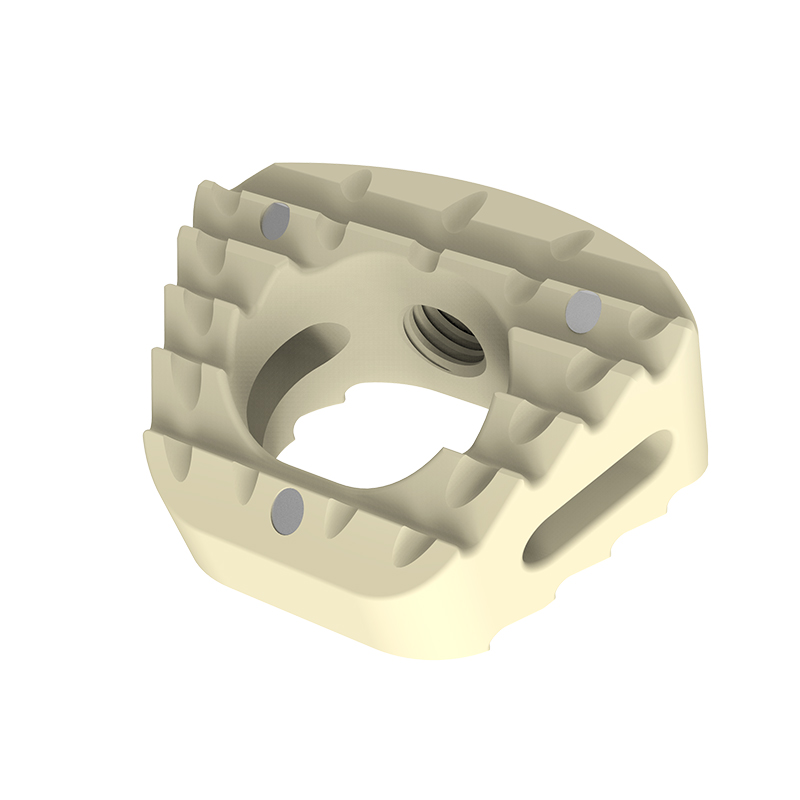ZP Cervical Cage Manufacturer CE FSC ISO Insured Supplier
Product Description
Ease of Use
Because plate and spacer are preassembled, the plate is automatically aligned upon implant insertion. This avoids the process of aligning and realigning an anterior cervical plate
The ZP screws have a one-step locking conical head which locks the screw to the plate by simply inserting and tightening the screw.

Reduces Risk of Dysphagia
ZP Cage is contained within the excised disc space and does not protrude past the anterior wall of the vertebral body as do anterior cervical plates. This zero anterior profile may be beneficial in reducing the occurrence and severity of postoperative dysphagia.
In addition, preparation of the anterior surface of the vertebral body is minimized because the implant does not lie against this surface.
Prevents Adjacent Level Ossification
It has been shown that cervical plates placed near adjacent level discs can contribute to bone formation near or around the adjacent level which may lead to future complications.
ZP Cage minimizes this risk, as it remains as far as possible from the adjacent level disc spaces.


Titanium Alloy Plate
Provides a secure, rigid screw locking interface
Stresses in plate are decoupled from spacer through an innovative interface
Locking Screws
Screws form a bone wedge with a 40º± 5º cranial/caudal angle and 2.5º medial/lateral angle to enhance pull-out resistance
One-step locking screws
Self-tapping screws improve thread purchase
Trilobular thread cutting flutes are self-centering
PEEK Interbody Fusion Cage
Radiopaque marker for posterior visualization during imaging
Tantalum marker is 1.0mm away from the edge, provides intra- and post- operative positional information
Spacer component is made of pure medical grade PEEK (Polyetheretherketone)
PEEK material does not contain carbon fibers reducing the risk of systematic uptake and local connective tissue formation
Teeth on the implant surface provide initial stability


Indications
Indications are lumbar and lubosacral pathologies in which segmental spondylodesis is indicated, for example:
Degenerative disc diseases and spinal instabilities
Revision procedures for post-discectomy syndrome
Pseudarthrosis or failed spondylodesis
Degenerative spondylolisthesis
Isthmic spondylolisthesis
Indications
The ZP cage is indicated for use following anterior cervical discectomy for reduction and stabilization of the cervical spine (C2–C7).
Indications:
● Degenerative disc disease (DDD, defined as neck pain of discogenic origin with degeneration of the disc confirmed by history and radiographic studies)
● Spinal stenosis
● Failed previous fusions
● Pseudoarthrosis
Contraindications:
● Spinal fracture
● Spinal tumor
● Severe osteoporosis
● Spinal infection
Clinical Application

Product Details
| ZP Cervical Cage | 5 mm Height |
| 6 mm Height | |
| 7 mm Height | |
| 8 mm Height | |
| 9 mm Height | |
| 10 mm Height | |
| ZP Locking Screw | Φ3.0 x 12 mm |
| Φ3.0 x 14 mm | |
| Φ3.0 x 16 mm | |
| Φ3.0 x 18 mm | |
| Material | Titanium Alloy |
| Surface Treatment | Micro-arc Oxidation |
| Qualification | CE/ISO13485/NMPA |
| Package | Sterile Packaging 1pcs/package |
| MOQ | 1 Pcs |
| Supply Ability | 1000+Pieces per Month |









